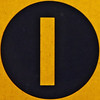I love facebook. No one should really be surprised at all. I'm am obsessive about writing, internet communication tools, and photos. Thus, I love love love facebook.
Despite the fact that I can't actually remember what you all will be able to see (I think my privacy settings are fairly strict) you're more than welcome to click on the link to
my profile and "friend" me. Now it's time to answer the questions.
1. Why is it important that educators know how social networking works?
We need to understand these sites because our kids use them. I'm a big advocate of understanding our chillins' lives through their activities, and when the internet is such a huge part of them, it's something we can't ignore. If we aren't going to make an effort to see what kind of public exposure they're getting on the internet, how can we expect to understand problems that might arise from it? In addition, we need to be able to show students the positives and negatives of using social networking sites. I can't tell you how many students I had at the college level that didn't believe employers checked the Fbook during hiring until they found out they didn't get the job because of their profiles.
2. What new insights did you gain about these popular sites?
Ah, no new insights, I don't think. I completely understand the appeal of this networking site, and the only thing that I noticed today is that it's another example of how students truly desire the ability to take ownership of something and make a statement as an individual. Facebook and Myspace give them that opportunity, we need to remember to provide it in the classroom as well.
3. What did you like or dislike about each of the sites you explored?
As a former Myspace user, I'll say that I greatly prefer Facebook if only for the protection it offers its users. Myspace privacy controls are often times a joke, even if they seem like they work. Funny story - I thought my profile was closed on Myspace when I started teaching, but learned very quickly that it wasn't when my students started asking me about my "top friends" and asking where my tattoo was on my body. Lesson learned, profile shut down.
4. Which site had the most useful features?
Useful? I suppose that Facebook has the most applications and groups. Actually, come to think of it, some of the applications on Facebook have an educational component to them, like word games and the Notes function, etc.
5.Can you see an educational application for any of these sites?
Honestly, not at this level. In middle school, they're just starting to figure out how to interact with their peers face-to-face, which makes online interaction all the more awkward. However, as they get older and more mature, I could see it becoming a real tool. When I taught college chillins, they sometimes used the "Notes" application to work on their projects, and the groups created a real bonding tool for them. It could work for younger students too, but I'm just not comfortable opening my own profile to my students, even if it was one I created for that sole purpose. It would give the kids an illusion of a different kind of a relationship with their teacher, which is a little concerning for a teacher as young as I am. Maybe in a few years...












